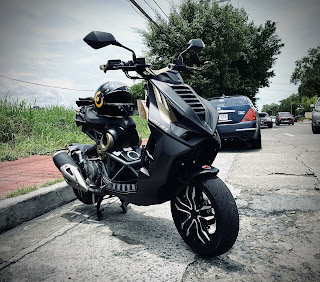The Vespa Bandwagon
As a newbie, what's the first thing that comes to mind when you hear the word motorcycle? Harley Davidson, right? If you were asked to draw a scooter, what would you draw? A Vespa of course! Vespa is the Ferrari and the Harley Davidson of scooters. Before there were only Vespas and Lambrettas in Europe and these scooters pretty much ruled the streets and went head to head with each other.
For centuries, Vespa has survived and was able to maintain its status as “THE” premium scooter while its competitors slowly faded into dust. Sure, Lambretta made a comeback but their scooters are made in Taiwan which for me, puts them at the same level as the popular Kymco Like. Now, some may argue that Vespas are made in Vietnam. Yes, some models for some markets are, but still under Vespa. Vespa is a modern classic just like how a Porsche is. They have maintained the overall design sticking to its signature monocoque chassis while introducing new tech. Over the years, I have been able to own and ride different models and was even lucky enough to own a manual Vespa, a millennium PX150.
Vespa PX150 and Vespa Primavera 150
Vespa in the Philippines currently offers four staple models namely, the S125, the Primavera, the Sprint, and the GTS. The latter three have different variants to choose from.
To give you an idea, the S125 is the entry-level Vespa it features basic tech and a 125cc i-Get engine. The Primavera is the classic Vespa which has a 150cc i-Get engine and features Anti-locking brake system aka “ABS brakes” among other features. The Sprint is the sportier version of the Primavera. The GTS has two variants, one with 150cc and one with a 300cc engine, both equipped with i-Get technology and ABS.
First-generation S125
For me, the model to go for is either the S125 or any of the smaller 150cc Vespa. The GTS 150 is just a heavier chunked-up version of the Primavera and the Sprint. In my own opinion, the GTS 300 is overkill for a city scoot. You won't be needing a 300cc engine for you to get from point A to point B in the metro and riding it on the weekend would give you a similar, if not the same experience as with the other 150cc models BUT if you have the extra cash and want the best top of the line and the fastest Vespa then go ahead and spend that cash. Should you buy a Vespa? Only if you really want it. Vespa offers less tech for more price, you can buy a Japanese scooter with more features for a lot less. Maintenance will also cost more. To give you an idea, a simple change oil (First PMS) will cost you around ₱2,500.00. Buying a Vespa is not just buying a scooter but also the lifestyle that comes with it. A Vespa is a scooter that you can enjoy and keep for a very long time, the brand will never go out of style and the features that their models offer are the only tech you will ever need in a scooter. If you decide to jump on the bandwagon now, just make sure to buy from authorized dealers and avoid scalpers or opportunists for as much as possible. Avoiding them will help correct the market value of Vespa which in all honesty has inflated way out of hand over the past years. For second-hand scooters, don’t rush in buying one. A Vespa with the right price will always come. Live the brand and keep it classy. After all, a classic brand is for classy people. Play the part. *wink wink






Comments
Post a Comment